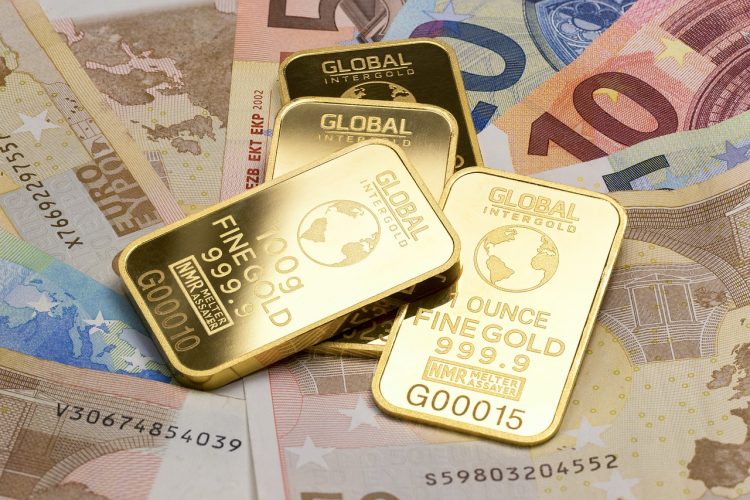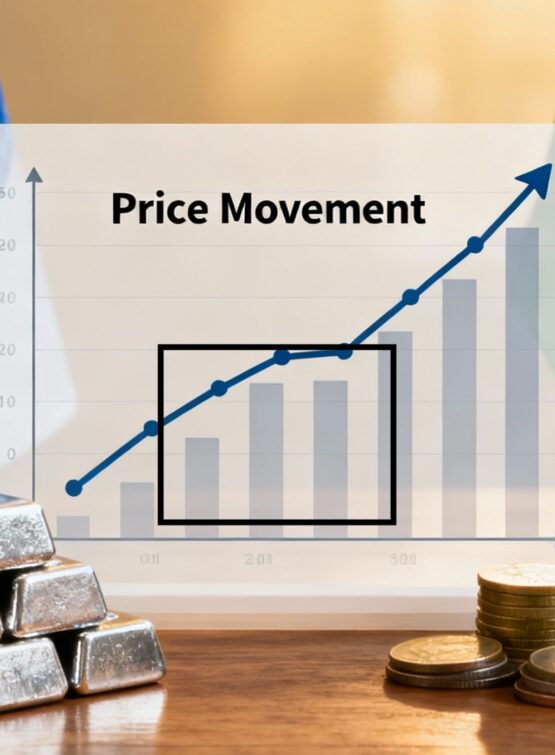Overview:
We have been discussing why Gold has to be included in every investor’s portfolio in the previous articles. In this post, I am going to explain fundamental aspects of why Gold is essential as an investment asset. Let me remind you, in 2019, the price of Gold was around ₹35000 per 10gm(standard measurement in India).
I was focused on stock markets during that time and completely neglected the Gold. It would have been so great then if I had known the real value of Gold. I remember some of my relatives and friends expecting the Gold price to fall below ₹30000. They were convinced that prices will fall next year, i.e. 2020 and they could buy. Everyone knows what happened in the year 2020. Except in March, following the lockdown news and market crash, the price never came down. The lowest price was around ₹38000, whereas, the price soared over ₹56000 in August 2020. Eventually, it came down, as of now on 06/02/2021, the price is hovering around ₹47000.
So why did the price of Gold surge from ₹35000 in 2019 to ₹47000 in 2021, an increase of 34% in less than one and a half years? To mainstream economists and financial experts, Gold is just a commodity trading on the futures markets like COMEX and MCX. Some of the financial advisors limit the Gold’s exposure to as low as 2% to 5% (max). What exactly is Gold, a precious metal, a commodity, or just a paper futures market?
History of Gold as Money:
While Gold is known to have been used as money thousands of years ago, it is redundant to discuss all of that information in a brief article. Instead, we shall focus on the modern gold standard since 1870. It was called “Classical Gold Standard”.
Classical Gold Standard:
Under this Gold Standard, all republic nations fixed the value of their currencies in terms of a definite amount of Gold. Some countries, that did not directly link to Gold, had to tie with the countries’ that linked to gold. There was no restriction on the import and export of Gold. Domestic currencies were also easily convertible to Gold. Gold coins and other precious metals like silver coins were identified and circulated as domestic currencies. The exchange rates between the national currencies were also fixed.
The Central Banks only had two main monetary policy functions:
- Maintaining convertibility of fiat currencies into Gold at the fixed price and securing the exchange rate.
- Making sure that the adjustment process is brisk and the balance sheet is stable, which was way more difficult.
Obviously, with the full power over gold reserves and fiat currency, central banks were able to control the inflow, outflow, and price of gold. As with any banking system, Gold Standard had its own issues, which could have been dealt with better if there was more transparency in the transactions. During the First World War, the great depression of 1929, and the Second World War, global financial system and economy took a major jolt, and the Classical Gold Standard came to an end.
The Bretton Woods system:
In the last stages of the Second World War, economically advanced nations like the United States, Western Europe, Canada, Australia, and Japan formally came to an agreement for governing monetary relations. It was formulated in July 1944 in Bretton Woods, New Hampshire, United States. Hence, the name Bretton Woods Conference.
As the United States controlled two-thirds of global gold reserves during that time, the Bretton Woods system linked the US dollar to Gold. One ounce of gold was priced at 35 US dollars. All the other national fiat currencies were linked to the US dollar. Thus, the US dollar became the global reserve currency since Bretton Woods.
In the years afterward, in the 1960s, United States made extractive use of global reserve currency status. The whole world had to trade in US dollars as the exchange, which means most of the international transactions were made in US dollars. As a result of this, gold gradually lost its shine. The continuous trade deficit of the United States also resulted in the depletion of the gold reserves from the US treasury.
The Termination of Bretton Woods agreement:
The US government was in a dire state of financial turmoil with depleting gold reserves. European nations, led by France, rejected to trade in US dollars, demanding the trade settlements only in gold. The US dollar could not be devalued against gold because other countries would raise their exchange rate to the dollar. It means devaluing the dollar against other currencies. Finally, on 15th August 1971, US President Nixon unilaterally canceled the convertibility of the US dollar to gold.
The US residents and citizens were already banned from owning gold as an investment since 1934 based on Gold Reserve Act. Only since 1975, the Americans were able to trade and own Gold via free markets.

After delinking of the US dollar, the gold prices rose to $200 in Dec 1974, a rise of over 470% in less than five years. After a brisk fall back to $100 in Aug 1975, the Gold was trading at over $700 by Jan 1980. The US FED hiked the interest rates to 20% to bring back the price of Gold and fight against inflation. For the next 20 years, gold price fell consistently to $250 by 2001.
The Secular Bull Market:
Since 2001, the Gold price continued to rise at a very good rate, $250 to $1900 in August 2011. After a pullback for the next four years, to $1040 in November 2015, Gold started to rise again since January 2016. We all are aware of Gold reaching its all-time highs in August 2020, trading at a high of $2090. As of today, 06/02/21, it closed at $1813. In my previous articles, I have mentioned why the Gold price could move even higher over the long term. Some experts forecast the price to reach $5000 or above in the coming years. No one is sure of the time frame.

Conclusion:
To explain the whole concept in a single paragraph, Gold was the real money for centuries. All fiat currencies had the gold backup until 1971. Gold was the main reason behind the authenticity of currencies for a long time. But, over the last few years, fiat currencies have evolved from copper and steel coins, paper bills to digital currencies. Since currencies were backed by nothing for the last 40 years, the whole generation lost the perception of what national currencies like dollars or rupees worth.
I am not portraying that governments are purportedly debasing the currencies. It is just the process we have developed over years. Forget about Gold, I remember buying a 500ml milk packet for ₹8 in 2005. Now it is at ₹30, which means milk inflated over 275% in the last 15 years. Anyhow, Gold was at ₹7000 in 2005, inflated by 575% to reach ₹47000 now.
So is Gold price rising or fiat currencies devaluing? It is up to you to decide whether Gold is a good investment or not. I am not sure Gold will double or triple the current price. I would be speculating too much if I expect that kind of price movement. Who anticipated that Gold could rise from $250 in 2001 to $1900 in 2011? Personally, I consider that we can afford 10% of investment portfolio to Gold, especially, in these inflationary conditions.
Important Links:
- https://www.macrotrends.net/1333/historical-gold-prices-100-year-chart
- https://www.gold.org/about-gold/history-gold
- https://www.bankbazaar.com/gold-rate/gold-rate-trend-in-india.html
Disclaimer:
I provide the information and my views on the website only to educate new investors, stock market enthusiasts, and the common public on equity and other market investments. Please consult your financial adviser before making any investments in the stock or commodity markets. In case of any queries, you can contact me or email: admin@valueinvestingonline.in.





1 Comment